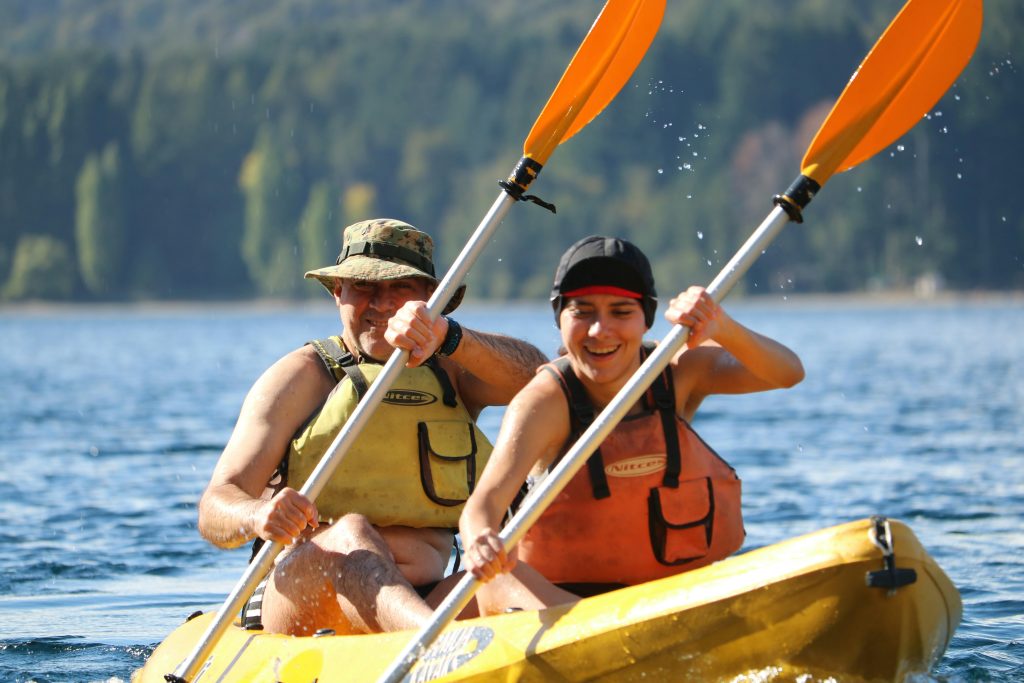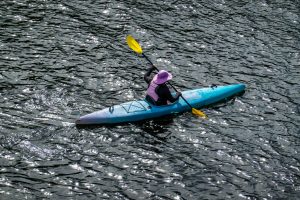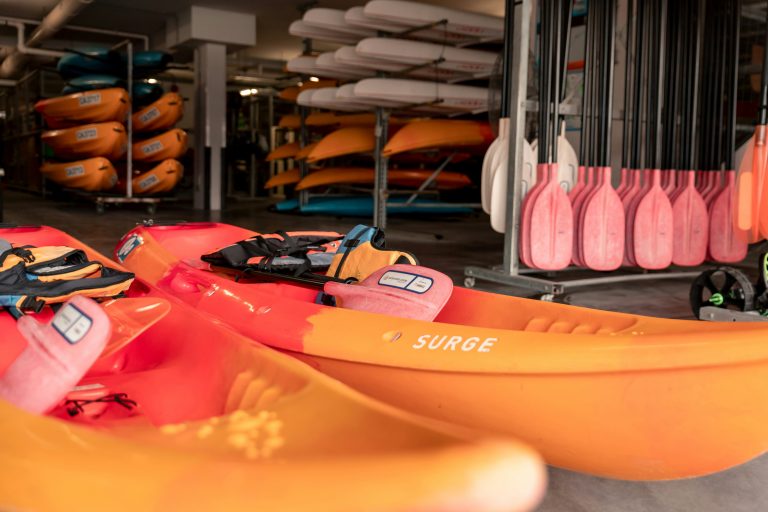Ready to hit the water? Learn 10 essential basic kayaking techniques for beginners—from paddle grip and posture to turning and safety. Start paddling with confidence!
Getting into kayaking for the first time can feel a bit intimidating, but don’t worry—learning basic kayaking techniques is easier than you think. Whether you’re cruising across a calm lake or gently drifting down a river, these foundational skills will help you paddle more efficiently, stay balanced, and have a lot more fun on the water.

Table of Contents
1. Get Your Paddle Grip Right
Everything starts with how you hold your paddle. Place your hands slightly wider than shoulder-width on the shaft, with your knuckles facing upward. This gives you better control and reduces strain.
Pro Tip: Don’t grip too tightly. Think of holding a small bird—firm enough so it doesn’t fly away, but gentle enough not to hurt it.
2. Learn the Forward Stroke
This is your main paddling move. Reach forward, dip the blade near your feet, and pull it back alongside the kayak until it reaches your hip.
Use your core to power the movement—not just your arms. Twist your torso for strength and efficiency.
3. Reverse Stroke = Backup Mode
To move backward or slow down, use the reverse stroke. Plant the paddle blade near your hip and push forward toward your feet.
It’s handy when docking or steering in tight spaces. Practice alternating between forward and reverse to build control.
4. Sweep Stroke for Turning
Want to turn your kayak? Use a sweep stroke. For a right turn, sweep the left blade in a wide arc from front to back.
The wider the sweep, the sharper the turn. Keep it smooth—not rushed—for the best results.
5. Master the Draw Stroke (Sideways Movement)
To move sideways (like toward a dock or another kayak), reach the paddle out to the side and pull water toward you.
Keep the paddle vertical and draw straight to your hip. This takes practice—but it’s a game-changer once you nail it.
6. Practice Bracing for Stability
Bracing helps you stay upright when things get wobbly. Use the low brace by placing your paddle flat on the water and applying downward pressure.
This move is essential in waves or boat wakes. According to the American Canoe Association, effective bracing can prevent most recreational kayak capsizes.
7. Posture Is Power
Good posture helps with balance, stamina, and technique. Sit up straight, shoulders relaxed, feet braced on the foot pegs.
This lets you rotate your torso more easily and paddle with better form—preventing back and shoulder pain on longer trips.
8. Try Edging (Tilt Control)
Edging means slightly tilting your kayak to one side by shifting your body weight. It gives you better control when turning or handling waves.
Start slow, with small tilts. This technique is especially helpful as you move beyond beginner paddling.
9. Find Your Rhythm
Consistent cadence beats speed. Aim for a smooth, steady pace—most paddlers feel comfortable around 60–80 strokes per minute.
Breathe naturally and find a rhythm that feels effortless. It can even feel meditative on longer trips.
10. Always Prioritize Safety
Safety is a skill too. Before you paddle:
- Check the weather
- Wear a life jacket (PFD)
- Let someone know your route
- Carry a whistle or waterproof phone case
Want to level up? Take a class or join a local kayaking group. The Paddle Sports Industry Association can help you find certified instructors nearby.
Choosing the Right Equipment
Before practicing your kayaking technique, it’s important to have the right foundation — starting with gear. Check out our Beginner’s Guide to Kayaking to learn the basics of equipment, safety, and getting started on the water.
Not sure which kayak is right for you? Our guides on Sit-On-Top vs. Sit-Inside Kayaks and How to Choose a Kayak for Beginners explain what matters most when picking your first boat.
Need a checklist? Don’t miss our Essential Kayaking Gear for Beginners for a complete, printable packing list.
Build Your Foundation with Practice
These basic kayaking techniques form the foundation of every paddler’s journey. You won’t master everything on day one—and that’s okay!
Focus on:
- Smooth, controlled movements
- Practicing on calm waters
- Progressing at your own pace
With time, your skills will become second nature. Soon enough, you’ll be confidently exploring lakes, rivers, and maybe even light coastal conditions.
The journey from beginner to skilled kayaker starts with mastering these essential moves. Practice consistently, stay curious, and most of all—enjoy the ride. Kayaking opens up a whole new world of adventure, peace, and connection with nature.
Frequently Asked Questions (FAQ)
What are the basic kayaking techniques every beginner should learn?
Beginners should learn essential techniques like the forward and reverse strokes, proper paddle grip, sweep stroke for turning, draw stroke for sideways movement, bracing for stability, maintaining good posture, and keeping a consistent paddling rhythm.
How can I improve my balance in a kayak?
Start with good posture—sit upright with feet firmly braced. Then practice “edging” your kayak by shifting your weight slightly to one side. Bracing techniques, especially the low brace, also help keep you steady in rougher water.
What is the best paddling speed for beginners?
A good cadence is around 60–80 strokes per minute. Focus on smooth, steady movements instead of speed. This will help conserve energy and improve your endurance on longer trips.
Do I need any special equipment to learn basic kayaking techniques?
Yes. You’ll need a kayak suitable for beginners, a lightweight paddle, a properly fitted personal flotation device (PFD), and optional accessories like a spray skirt for sit-inside kayaks. The right gear makes learning easier and safer.
Is it necessary to take a kayaking class?
Not required—but highly recommended. A class with a certified instructor helps you learn techniques faster, avoid bad habits, and stay safe. Many local paddling groups or outdoor shops offer affordable beginner sessions.







